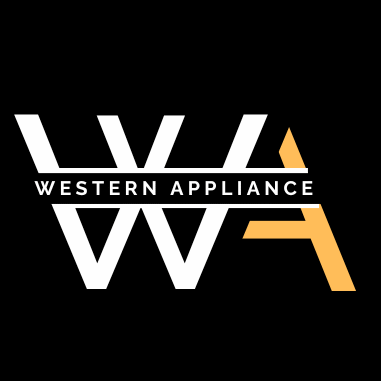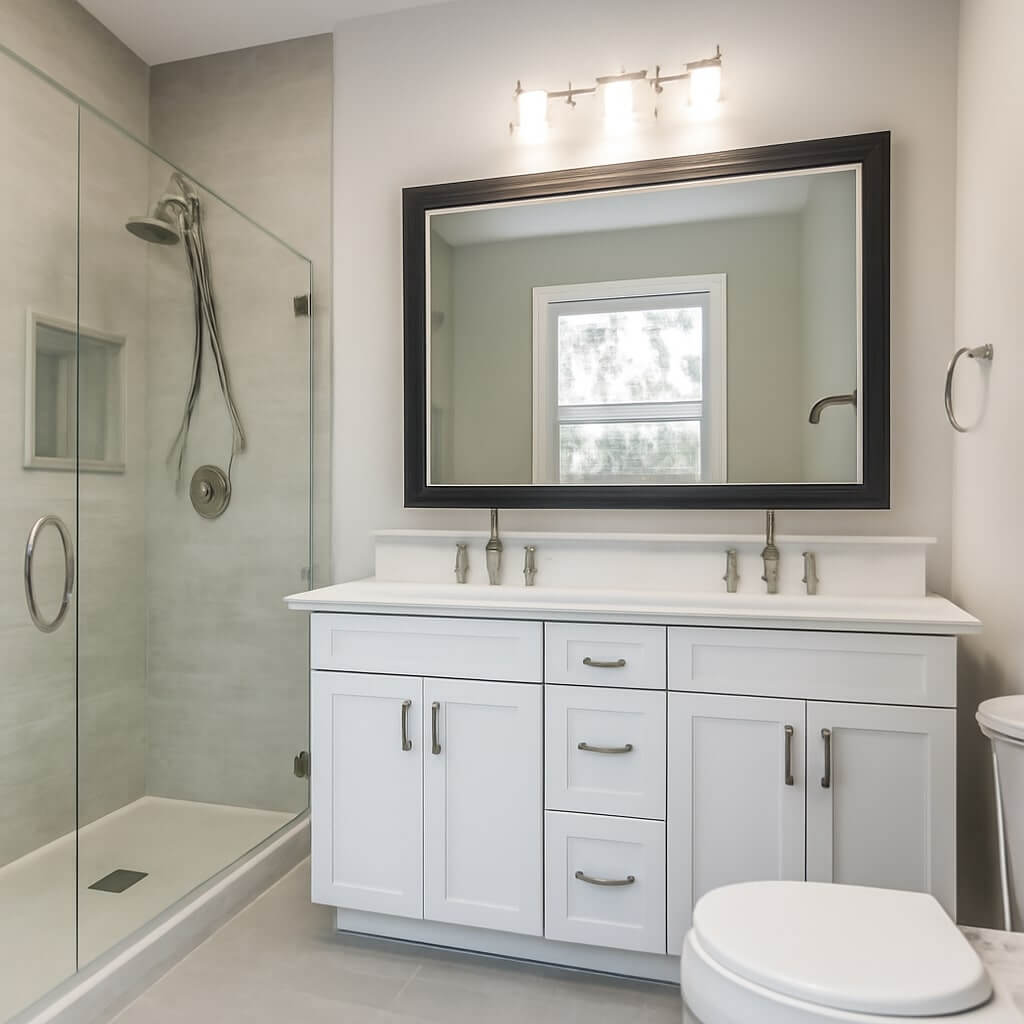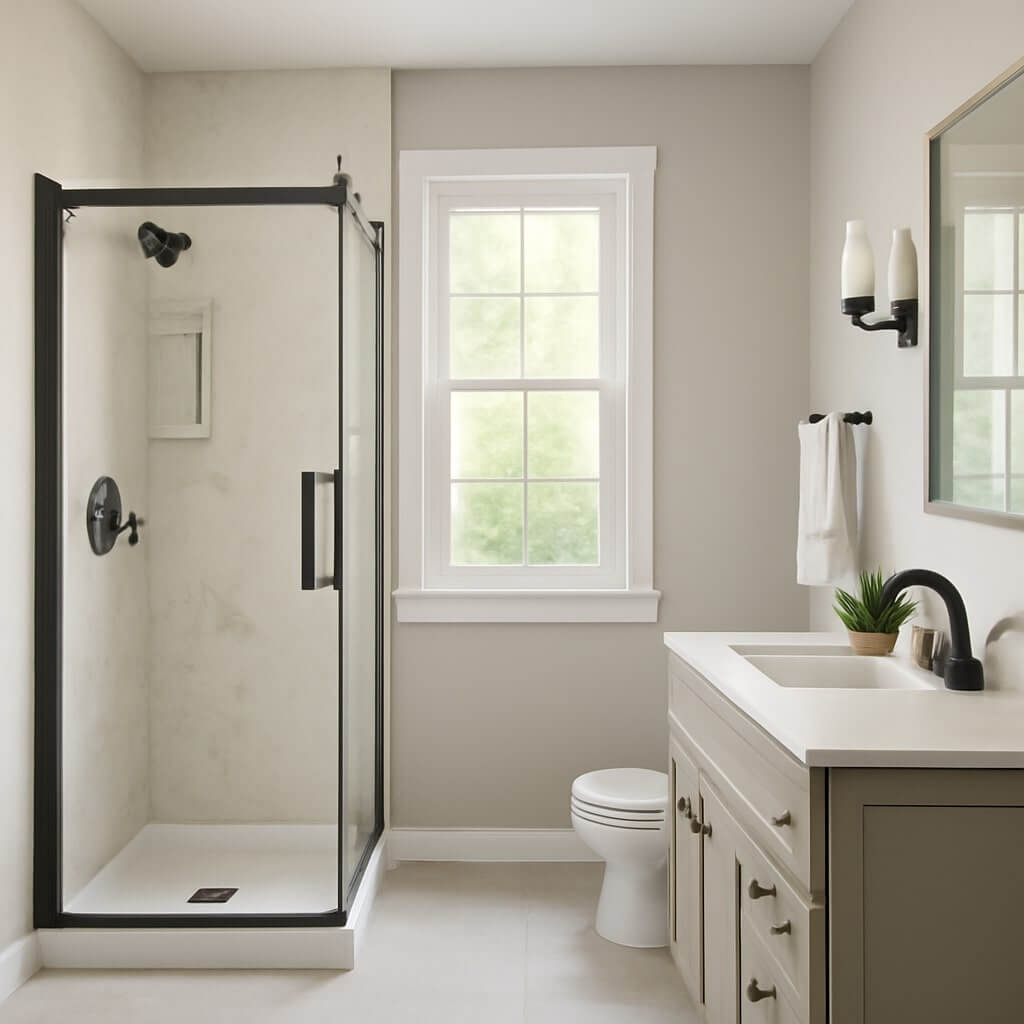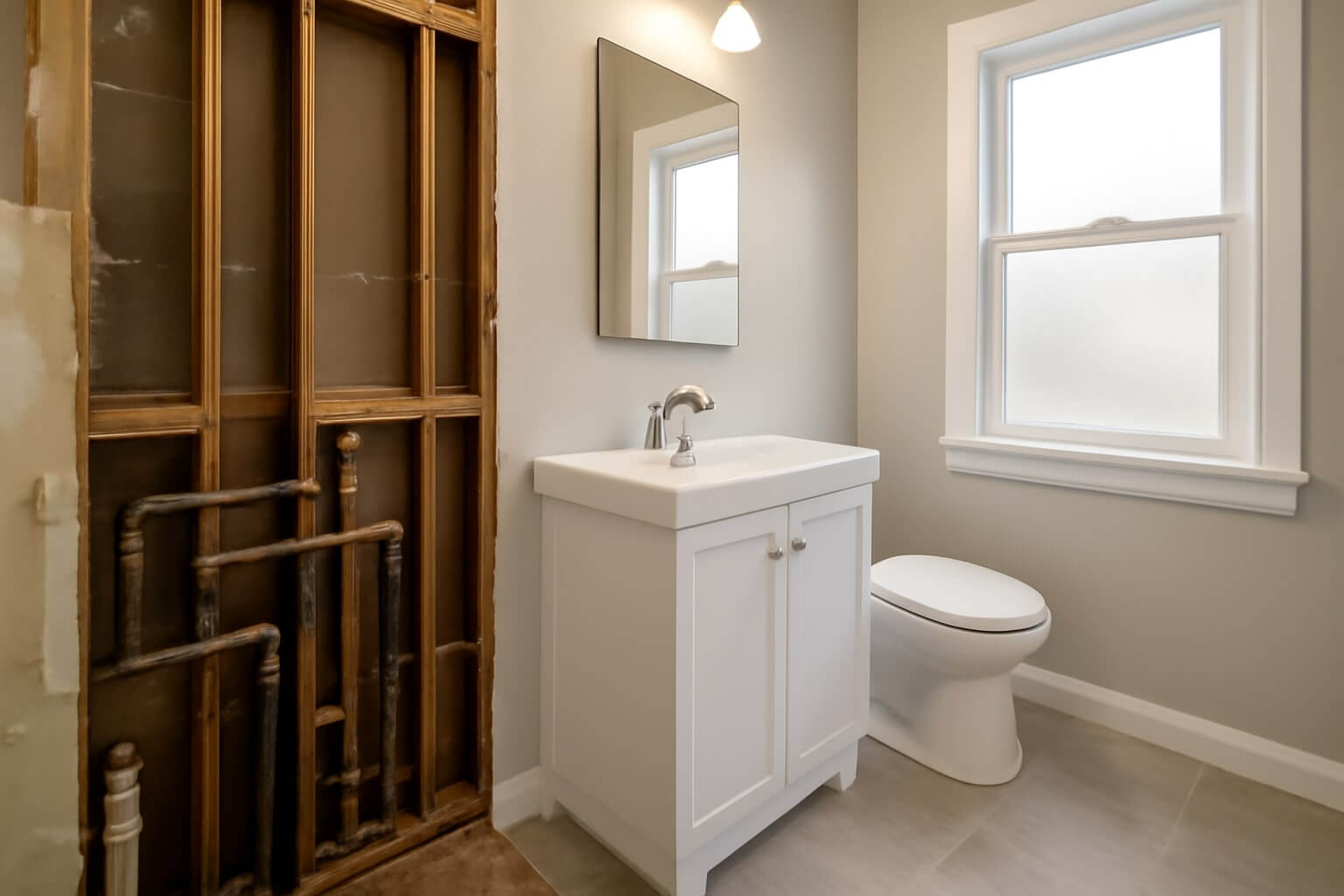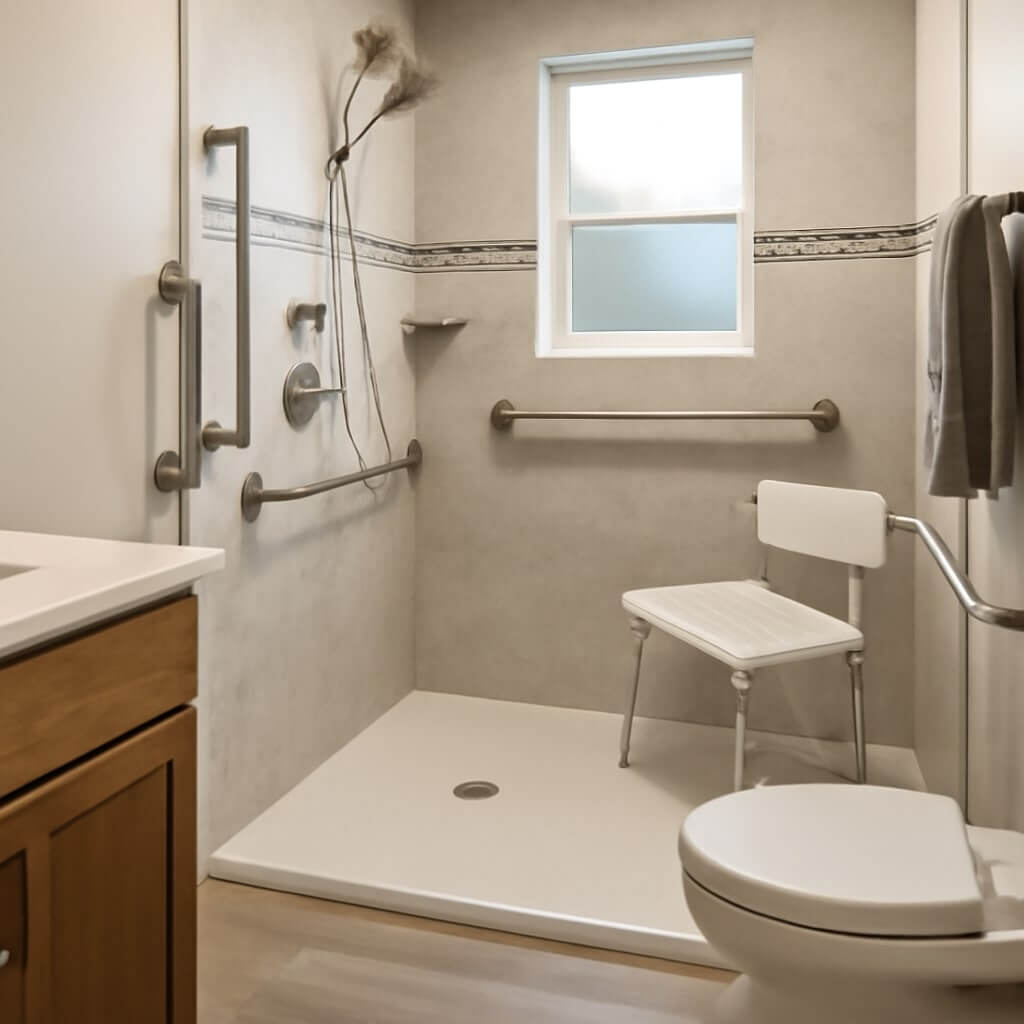When you’re planning a bathroom remodel, it’s vital to have a solid contract in place. This document should clearly define the project scope, including design preferences and materials. You’ll want to outline a timeline with key milestones and establish clear payment terms. But that’s just the beginning, as there are several essential elements that can protect both you and the contractor. Let’s explore these important components in detail.
Key Takeaways
- Clearly define the project scope, including design preferences, materials, and key elements like flooring and cabinetry.
- Establish a detailed payment schedule, covering total costs and any contingency funds for unforeseen expenses.
- Outline the project timeline with specific milestones for demolition, plumbing, and finishing touches to track progress.
- Specify materials and finishes, including durability requirements, to ensure functionality and aesthetics are aligned with project goals.
- Include warranty information for materials and workmanship, along with proof of the contractor’s liability insurance coverage.
Project Scope and Details
When you begin a bathroom remodel, it’s essential to define the project scope and details clearly to guarantee a smooth process.
Start by outlining your design preferences, ensuring they align with your vision and budget. Identify the key elements you want to include, such as flooring, cabinetry, and paint colors.
Next, focus on fixture selections, like faucets, lighting, and showerheads, which greatly impact both functionality and aesthetics. Documenting these choices helps avoid misunderstandings later.
Timeline and Milestones
Establishing a clear timeline and milestones for your bathroom remodel is essential to maintaining momentum and ensuring timely completion.
To achieve this, consider including the following elements in your contract:
- Start and completion dates – Define when the project begins and ends to set expectations.
- Key milestones – Identify significant phases, like demolition, plumbing, and finishing touches, for effective milestone tracking.
- Timeline flexibility – Allow for adjustments due to unforeseen issues, ensuring both you and the contractor can adapt as needed.
With these components, you’ll keep your remodel on track and avoid unnecessary delays.
Payment Terms and Budget
Understanding the total project cost is essential for your bathroom remodel, as it helps you set realistic expectations.
You’ll also want to establish a clear payment schedule breakdown to guarantee that both you and the contractor are aligned throughout the project.
This clarity not only helps manage your budget but also fosters a positive working relationship.
Total Project Cost
A well-defined total project cost is essential for a successful bathroom remodel, ensuring you stay within your budget and avoid unexpected expenses.
To achieve this, consider the following:
- Cost Estimates: Gather detailed quotes from contractors to accurately assess labor and materials.
- Contingency Funds: Set aside 10-20% of your total budget to cover unforeseen issues, like plumbing surprises or material changes.
- Itemized Budget: Break down costs for each component, such as fixtures, tiles, and labor, to maintain transparency and control.
Payment Schedule Breakdown
Crafting a payment schedule breakdown is essential to guarantee clarity and accountability throughout your bathroom remodel project. Clearly outline your payment options and establish invoice details to avoid misunderstandings. Here’s a sample format for your payment schedule:
| Payment Stage | Amount Due | Due Date |
|---|---|---|
| Initial Deposit | 30% of total cost | Upon contract signing |
| Mid-Project Payment | 40% of total cost | After demolition |
| Final Payment | 30% of total cost | Upon project completion |
This structure guarantees you stay informed and helps maintain a smooth workflow during the renovation process.
Materials and Specifications
When selecting materials for your bathroom remodel, it’s essential to prioritize both functionality and aesthetics.
Clear specification details in your contract guarantee everyone’s on the same page. Here are three key aspects to take into account during material selection:
- Type of Materials: Specify whether you want ceramic tiles, marble, or glass for your surfaces.
- Finish Options: Include details about finishes for fixtures, cabinetry, and countertops.
- Durability Requirements: Highlight the need for water-resistant materials and those that can withstand daily use.
Permits and Regulations
Selecting the right materials lays the groundwork for your bathroom remodel, but understanding permits and regulations is just as important.
Before you start, check your local regulations to identify any necessary permits. These may include electrical, plumbing, or structural permits based on your project’s scope.
Check local regulations for necessary permits, including electrical, plumbing, or structural, based on your project’s scope.
Failing to secure the appropriate permits can lead to fines or complications when selling your home.
Make certain your contractor is well-versed in permit requirements and can handle submissions on your behalf.
Keeping compliant not only guarantees a smoother remodel but also protects your investment and peace of mind throughout the process.
Warranty and Insurance
When remodeling your bathroom, understanding the types of warranties offered by contractors is vital for your peace of mind.
You’ll also want to clarify the insurance coverage details to guarantee you’re protected against any unexpected issues.
Let’s explore these important aspects to safeguard your investment.
Types of Warranties
Understanding the types of warranties available for your bathroom remodel is essential, as they can greatly impact both the quality of your renovation and your peace of mind.
Here are three key warranty types to evaluate:
- Lifetime Warranty: This covers your materials and workmanship for the entire duration of your ownership, ensuring long-term protection.
- Limited Warranty: Typically time-bound, this warranty covers specific defects for a set period, so be sure to read the fine print.
- Manufacturer’s Warranty: Offered by product makers, it guarantees the quality of their materials while outlining replacement procedures.
Choose wisely to safeguard your investment!
Insurance Coverage Details
While warranties provide significant protection for your bathroom remodel, it’s equally important to contemplate insurance coverage.
Guarantee your contractor has adequate liability coverage to protect you from potential damages or injuries during the project. Verify that their policy limits are sufficient to cover any incidents that may arise.
Request to see a copy of their insurance policy and confirm it’s current. This step not only safeguards your investment but also guarantees peace of mind throughout the remodeling process.
Don’t hesitate to ask questions regarding their coverage, as understanding these details can help you avoid future complications or unexpected costs.
Conclusion
In conclusion, a well-crafted bathroom remodel contract is vital for a successful project. By clearly outlining the project scope, timeline, payment terms, and materials, you create transparency and protect your interests. Don’t forget to include necessary permits and warranty details to safeguard your investment. With a thorough approach, you can navigate potential challenges with confidence and guarantee a smooth remodeling experience. Taking these steps now will lead to a beautifully transformed bathroom you’ll enjoy for years to come.
